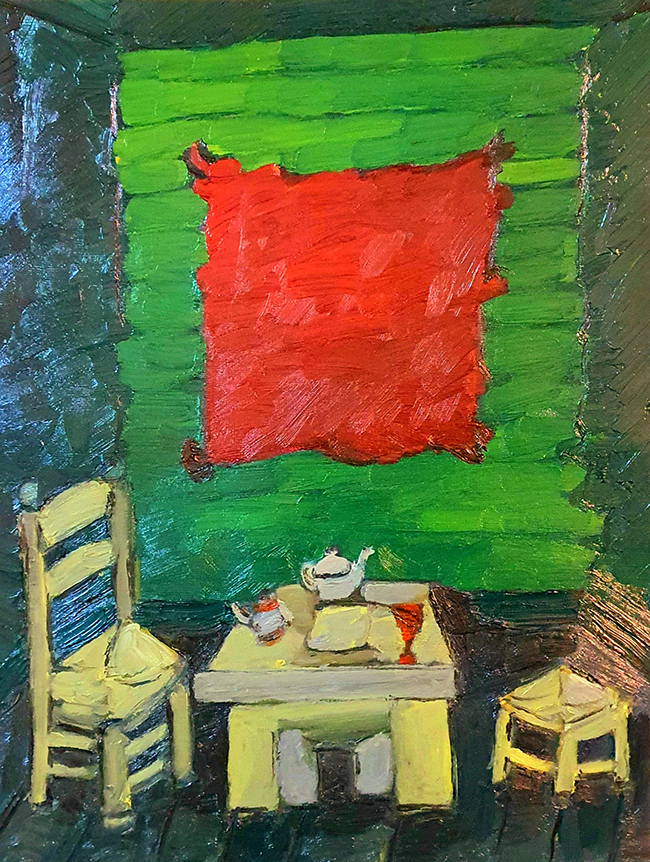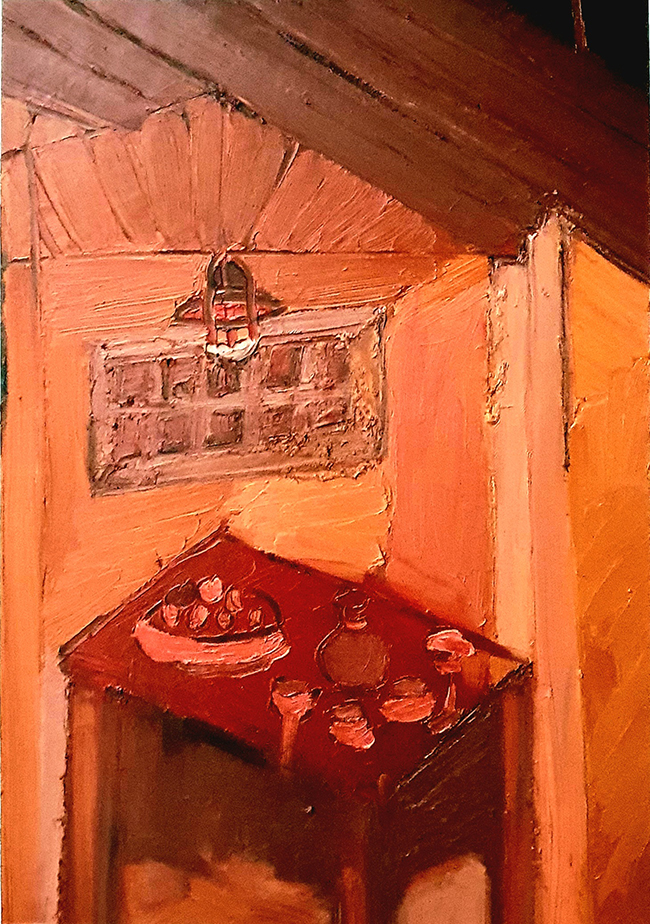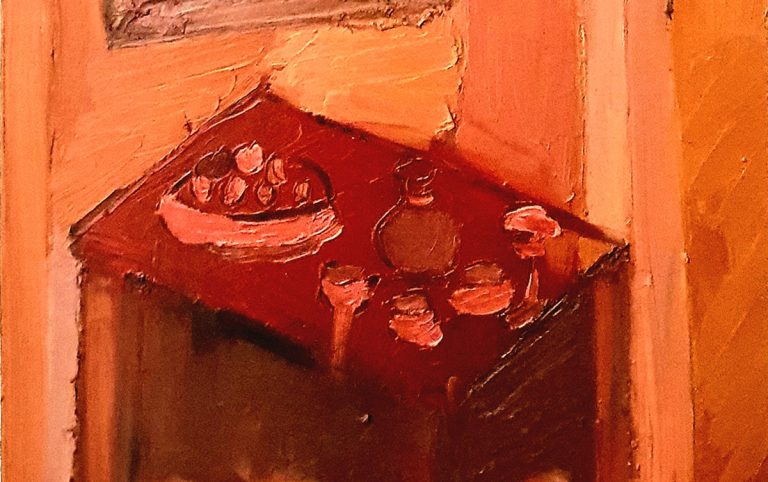As an artist, Katerina Tsitsela moves fluidly between painting and engraving, using her craft to explore the complex terrain of human perception and emotion. Her work isn’t just about what we see—it’s about what we feel, and often what we try to hide. Through color, texture, and her thoughtful approach to landscapes, she captures the essence of our internal struggles.

“I see my work as a way to interpret the human experience,” Tsitsela says. “I focus on what I call ‘internal landscapes,’ expressions of our mental and emotional states.” These landscapes go beyond mere representation; they’re psychoanalytic portraits of anxiety, depression, and the persistent struggle to overcome them.
Tsitsela’s work invites viewers to confront the emotional states they might otherwise avoid. Her use of texture is especially poignant, adding a tactile dimension to the otherwise intangible experiences of fear, sadness, or resilience. Her colors shift from muted tones to intense hues, symbolizing the push and pull of human emotion. There’s a sense of movement in her work—a reminder that nothing stays static, even in our most difficult moments.

For Tsitsela, the process of creation is as much about exploration as it is about expression. Her pieces don’t just depict struggles; they serve as mirrors, reflecting the raw reality of human emotion back at the viewer.
“Through my work, I show the emotional and mental condition,” she explains. “I want to make visible what is often invisible—the anxiety, the depression, but also the resilience.” Her art doesn’t shy away from difficult subjects. Instead, it leans into them, creating space for understanding and growth.
Her approach is deeply personal yet universally resonant. Tsitsela often references the psychoanalytic idea of “landscapes of the soul,” a concept that positions her work as both introspective and symbolic. Each piece feels like a conversation, not just with the artist but with ourselves. The cracks in the paint, the engraved lines—they speak to the fractures and scars we all carry.
In her one of her recent series, Tsitsela turns her attention to the global lockdown and its impact on our collective psyche. The isolation, uncertainty, and forced self-reflection of those months created fertile ground for her exploration. These works aren’t just about the solitude of the pandemic—they’re about the emotional landscapes it unearthed.
The pieces in this series reflect the heaviness many felt during that time. Layered textures evoke feelings of suffocation or being trapped, while subtle shifts in color suggest hope breaking through. Tsitsela’s art captures the duality of the experience: the despair of separation and the opportunity for introspection.
Her portrayal of these “lockdown landscapes” feels timely, yet their themes are timeless. Loneliness, fear, and the search for meaning are experiences that transcend any one moment in history. By grounding her work in such universal emotions, Tsitsela ensures it remains relevant long after the pandemic fades from memory.
What sets Tsitsela apart is her ability to balance clarity and ambiguity. Her work is deeply expressive, but it doesn’t dictate meaning. Instead, it invites viewers to bring their interpretations, making each piece a shared experience.
This openness is intentional. “I don’t want to tell people what to see or feel,” Tsitsela says. “I want them to confront their own emotions, to see their own internal landscapes.” In this way, her art becomes a dialogue—a chance for viewers to connect with themselves through her work.
Her ability to evoke such a personal response speaks to her understanding of human nature. Tsitsela doesn’t just depict emotions; she immerses herself in them, using her art as a way to process and share what it means to be human.
While her latest work focuses on the lockdown, Tsitsela’s broader themes are timeless. Anxiety, depression, resilience—these are not new struggles. What makes her work so impactful is its authenticity. It doesn’t sugarcoat or oversimplify. Instead, it presents these emotions in all their complexity, reminding us that struggle and strength often go hand in hand.
Her work challenges us to slow down and pay attention—not just to her art, but to ourselves. In a world that often prioritizes appearances over authenticity, Tsitsela’s willingness to delve into the messy, complicated parts of life feels like a gift.
Katerina Tsitsela’s art is many things—raw, evocative, thought-provoking. But above all, it’s an invitation. Through her exploration of internal landscapes, she encourages us to reflect on our own. Her work isn’t about answers; it’s about questions, about grappling with the parts of ourselves we might otherwise ignore.
In her words and her art, Tsitsela reminds us that the human experience is as beautiful as it is complicated. And through her paintbrush and engravings, she offers a map to navigate it—one emotional landscape at a time.

